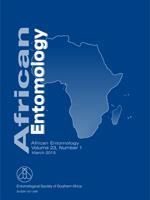The red palm weevil (RPW), Rhynchophorus ferrugineus (Olivier) is known to be the most serious pest of coconut palms and other cultivated palms in India, South Asia, North Africa, Europe, the United States and the Middle East. The larval feeding sites of the date fruit-stalk borer (FSB), Oryctes elegans Prell, may be attractive to RPW to lay eggs. Understanding the correlation between the RPW and FSB might help in predicting RPW infestations. The relative abundances of both species were followed in 16 date-palm production orchards in the Kingdom of Saudi Arabia from June 2007 to May 2008. A specifically designed light trap was used to monitor FSB, and pheromone traps (ferrugineol (4-methyl-5-nonanol)) were used to monitor RPWs. There was a weak correlation between FSB abundance and subsequent RPW infestation in date palms (R2 = 0.0039). The relative abundances of both species were well synchronized in the date palm orchards that were sampled.
How to translate text using browser tools
1 March 2015
Does Oryctes elegans (Coleoptera: Scarabaeidae) Abundance Determine Future Abundance of Rhynchophorus ferrugineus (Coleoptera: Rhynchophoridae) in the Date Palms of Saudi Arabia?
H.Y. Al-Ayedh,
H.M. Al Dhafer
ACCESS THE FULL ARTICLE
It is not available for individual sale.
This article is only available to subscribers.
It is not available for individual sale.
It is not available for individual sale.

African Entomology
Vol. 23 • No. 1
March 2015
Vol. 23 • No. 1
March 2015
abundance
fruit-stalk borer
red palm weevil




